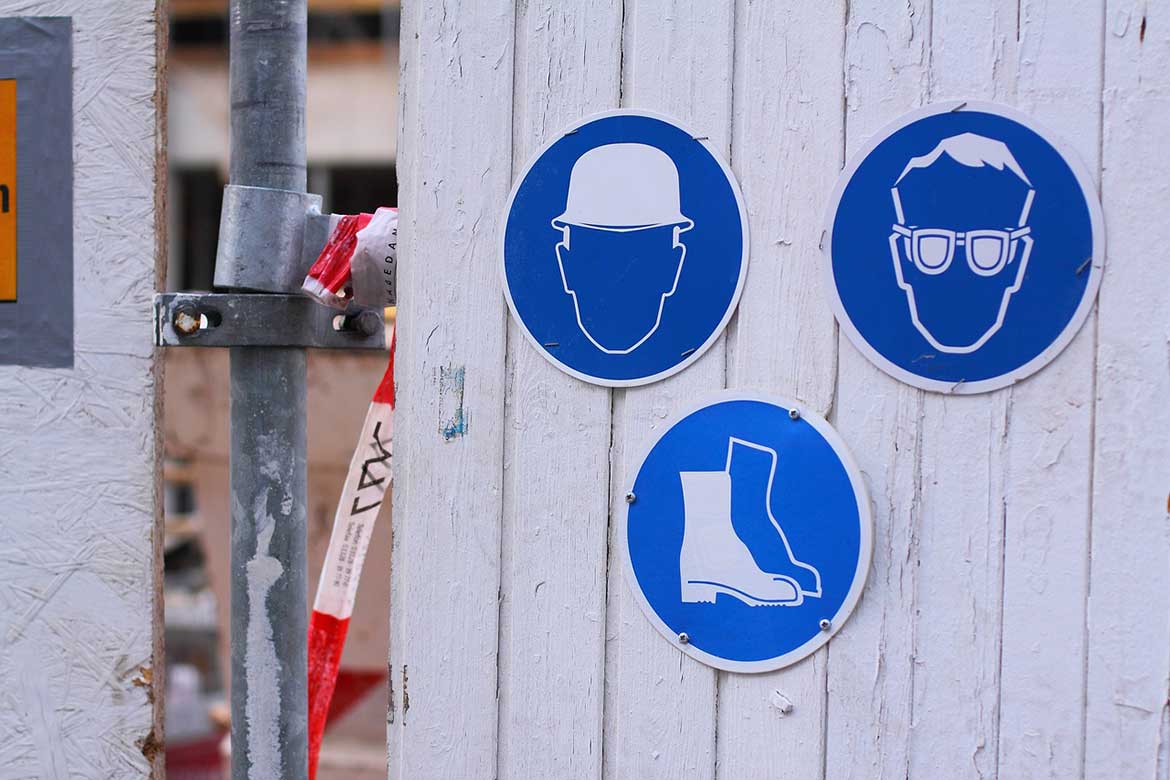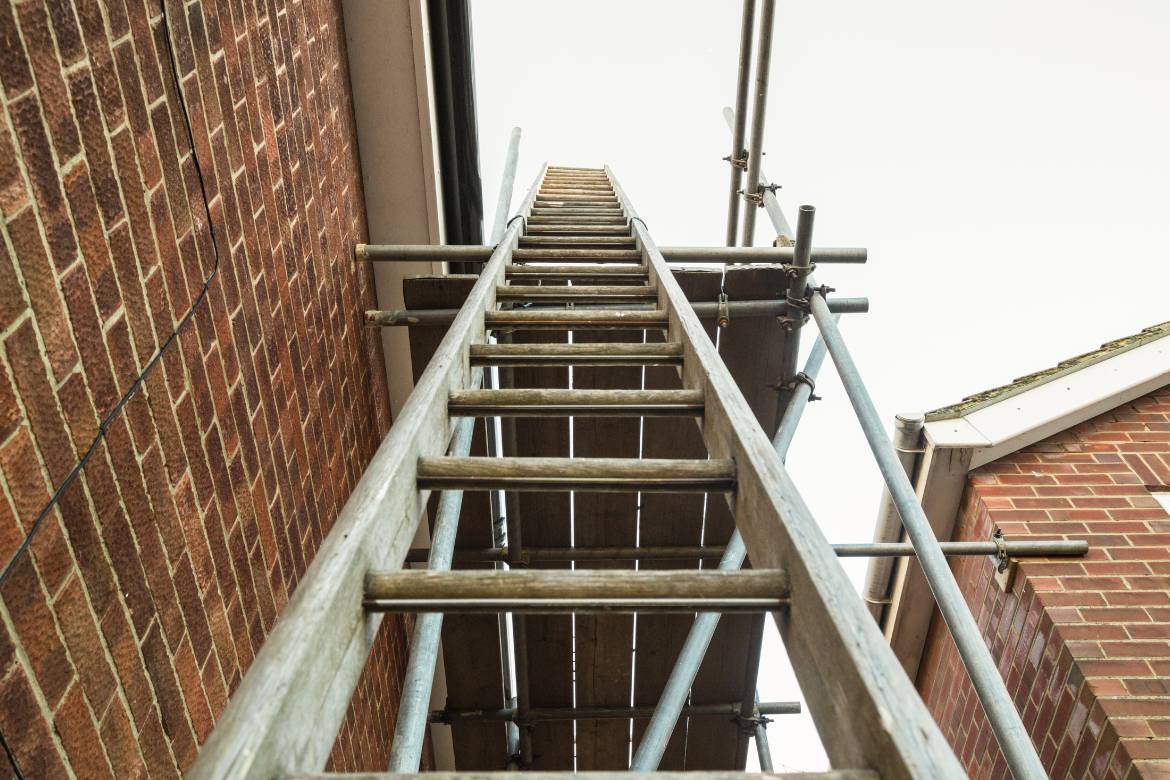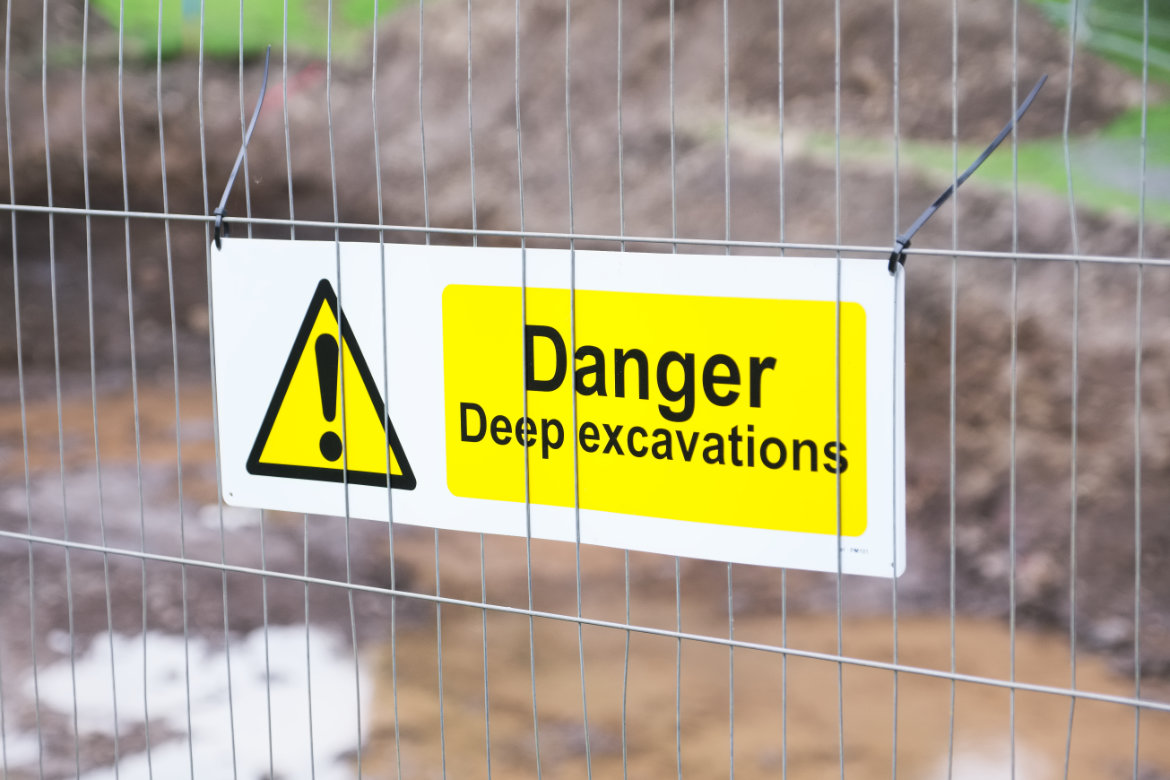13th June, 2024
20 Tips For Better Construction Site Security
Site security is an important issue in construction. Your site could be at risk from thieves and vandals, but it could also appear to be an exciting place for children or a shortcut for someone's way home. Here are 20 tips for better construction site security.

When you think about site security, you might first think about protecting your site from other people. For example, protecting your site from thieves and vandals.
But you should also think about protecting other people from your site. Construction sites can appear to be exciting places for children who are unaware of the dangers. Or your site could be blocking someone’s normal access route and they may still attempt to pass through the site.
Site security is an important issue. Each year a number of children are killed and injured on construction sites.
All construction sites require:
- Measures to manage access across defined boundaries; and
- Steps to exclude unauthorised people.
Not every unauthorised person might be accessing your site maliciously or to cause trouble. People can walk through construction sites to take a shortcut, or simply because they don't realise it is a construction site.
And these people might not work in construction, or be aware of the types of hazards and risk of harm they put themselves in if they enter a construction site.
And so you must prevent access by unauthorised persons. In fact, it's the law. As a contractor or principal contractor under CDM, you have a specific legal duty to secure your construction site.
(4) The principal contractor must ensure that [...] (b)the necessary steps are taken to prevent access by unauthorised persons to the construction site;
Site security even has it's own regulation (18) in part 4 of the CDM regulations.
Site security must be well managed to avoid injury to members of the public. If someone is injured on your site or by your work, you may have failed in your legal duties. It is an employer's responsibility to protect members of the public from risk.
Here are 20 tips for better construction site security:
1. Implement a signing-in and signing-out procedure
A secure site means knowing who is on the site - and who isn't. When anyone arrives on site, they should sign in, so you can check each person knows what they are doing, has had their induction, and has the necessary training and experience to behave safely on site.
Every person on your site needs to be accounted for if there is a fire or other emergency. This also means that at the end of the shift, you know when everyone has signed out and can check the site is left secure when unoccupied.

2. Use badges or hard hat stickers
In other secure workplaces, ID cards are commonplace. Why not follow that example and issue ID badges or stickers to the team on your construction site?
Badges and hard hat stickers can be used to quickly visually identify authorised personnel on site. This makes it easier to know who is supposed to be there, has been inducted, and is safe on site.
3. Secure the perimeter
Fencing and barriers make it difficult to access the site unauthorised and prevent people from "accidentally" wandering onto your site.
You should ensure the site perimeter is secured with 2m high fencing to prevent access to children. Look out for gaps underneath, particularly where the ground is uneven.
(2) Where necessary in the interests of health and safety, a construction site must, so far as is reasonably practicable, and in accordance with the level of risk posed, comply with either or both of the following—
- have its perimeter identified by suitable signs and be arranged so that its extent is readily identifiable; or
- be fenced off.

4. Display signage
Fences alone are not enough to warn people of the dangers. Do they know why their usual route home is blocked by a barrier? If not they might just be tempted to jump over and cut through. Make sure you display danger and warning signs around the perimeter.
(2) Where necessary in the interests of health and safety, a construction site must, so far as is reasonably practicable, and in accordance with the level of risk posed, comply with either or both of the following—
- have its perimeter identified by suitable signs and be arranged so that its extent is readily identifiable; or
- be fenced off.
5. Secure entrances
Now you've got your barriers (and signage) up, but you'll still need entrance points. Your team need to get on the site somehow!
But your entrance is also a security weakness if anyone can walk onto the site without being challenged. So make sure that unauthorised people are prevented from accessing the site by securing and monitoring entry points to make it harder for unauthorised visitors to gain access.
6. Explain security procedures
If gates need to be kept locked, or barriers need to remain in place, your team needs to know. If someone forgets to lock a gate behind them or notices a barrier is down and ignores it, your site is no longer secure.
Make sure that every authorised person is fully inducted and understands the site security procedures and controls. Keep security procedures enforced throughout the project.
7. Supervise visitors
Ensure visitors are supervised at all times on site. These are not unauthorised people, but they also may not fully understand the hazards or security procedures.
And don't forget that visitors need inductions too!
8. Ask questions
Construction sites are busy places. And the team will likely change throughout the project. Groundworkers one week, scaffolders the next. You might not always know if someone is unauthorised, or just new. This is where ID badges and hard hat stickers help (see tip number 2!).
Someone you don't recognise could be a delivery driver looking for the site office, an employee of the architect, or a friend of the client. Or they could be a trespasser.
Question any person you suspect to be a trespasser and escort them off-site if they are not authorised.
9. Lock up
An unlocked gate is like having no gate at all - people can just walk right in, invited or not! Lock access gates after normal working hours and anytime the site is left unoccupied.
10. Shut down
Your site might be targeted when people think they are less likely to get caught. Take extra precautions if the site is left unoccupied over weekends or holidays, such as CCTV or security patrols if needed.

11. Extra precautions
If your site is located in a heavily populated area or close to a school, you might need to take extra security precautions.
These could include:
- Higher fences
- Stronger fences
- CCTV
- Alarm systems
- Security patrols
You should also take extra precautions if your site is within an occupied building such as a school or hospital, to segregate the works area from the adjacent land uses.

12. Remove access
Access equipment like ladders and scaffolding help your workers reach new heights. But ladders can give unauthorised people, especially children, an exciting temptation to access areas they otherwise would not be able to. And it puts them at greater risk.
Remove access ladders from excavations and scaffolds out of hours.
13. Barrier off hazards
Falling into trenches is a real hazard to trespassers, who are not aware of where excavations are on your site, especially in the dark. Barrier off or cover excavations, pits and edges when out of use.

14. Immobilise machinery
If you leave machinery accessible, and the keys available, then anyone can turn it on - including trespassers.
Immobilise all vehicles and equipment when out of use and left unattended. Never leave keys with mobile plant, equipment and vehicles.
15. Lock away machinery
Even when immobilised, lock vehicles and machines within a secure site compound and out of view if possible. You don't want trespassers vandalising, abusing or stealing things from important equipment.

16. Store equipment out of sight
Speaking of keeping things out of view, power tools, materials and equipment should also be stored securely out of sight. These items are tempting to thieves and easy access could encourage opportunist intruders.
17. Secure substances
Hazardous substances can be toxic and harmful, but to children and people who don't know better, spraying foam or throwing liquids might seem like fun.
Lock away hazardous substances within secure storage units designed for that purpose. Stop them from getting into the wrong hands.

18. Stack safely
Trespassers and vandals aren't likely to take care around building materials, and materials stacked near or outside the site boundary are a hazard to members of the public.
Ensure building materials are safely stacked and stored so that they can't topple over or be easily knocked over.
19. Watch the weather
If a storm hits, will your scaffold stay in place? Will your barriers remain secure?
Consider wind and other weather events and make sure your site stays safe and secure when you are away.
20. Stay secure
Regularly check perimeter hoarding or fencing to ensure it is intact and secure. Don't let things slide as the project progresses, maintain your security procedures from start to finish.
Raise awareness with your team by downloading the site security toolbox talk. Use it as a quick refresher to provide on-site health and safety training to your workforce.
This article was written by Emma at HASpod. Emma has over 10 years experience in health and safety and BSc (Hons) Construction Management. She is NEBOSH qualified and Tech IOSH.
Need health and safety documents?
Search hundreds of health and safety documents ready to edit and download for your construction projects.
Find DocumentsRecent posts like this...

Securing Your Construction Site For Christmas Shutdown
Christmas is often the longest period your construction site will be closed, so site security is especially important. Because when you're away, things can go wrong. Shutting down your site and securing it from trespassers can help make sure that you don't get any nasty surprises.
Read Post
10 Winter Safety Tips For Construction Workers
Working outside in the winter can be a challenge for keeping warm, but winter work can also create safety hazards and increase the risk of accidents on site, due to poor weather conditions, reduced lighting, and hidden dangers. Here are 10 winter safety tips for construction workers.
Read Post
10 Good Housekeeping Rules For A Tidy Construction Site
On construction sites, good housekeeping refers to the practice of keeping your site clean and tidy. A tidy work area reduces the risk of accidents and increases fire safety. Implement these 10 rules, and you should see a reduction in slip and trip accidents and near misses on your project.
Read Post